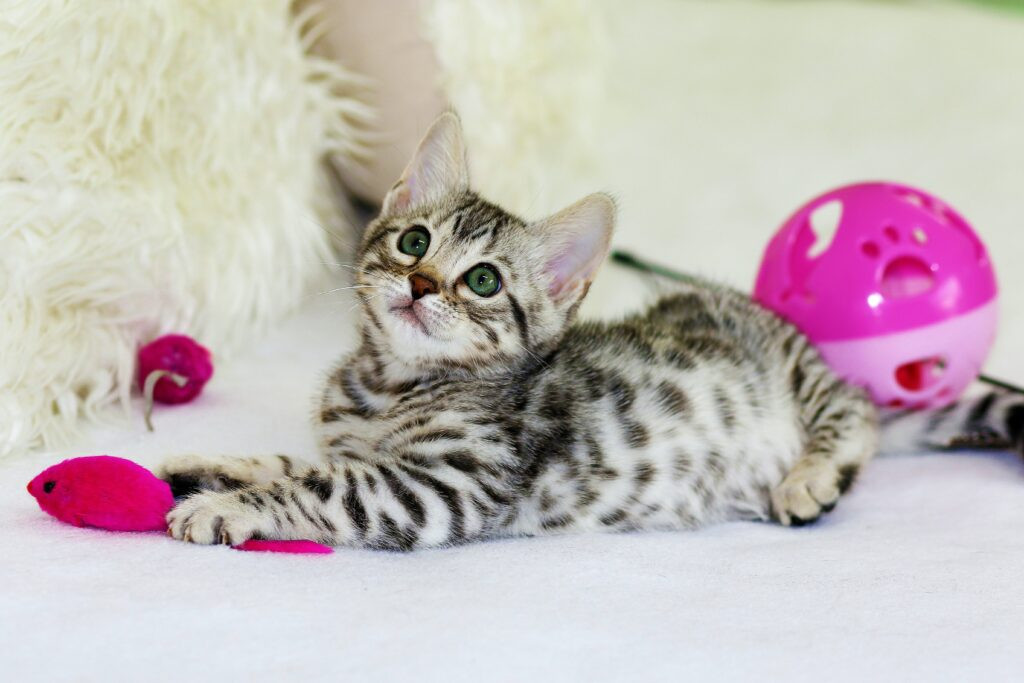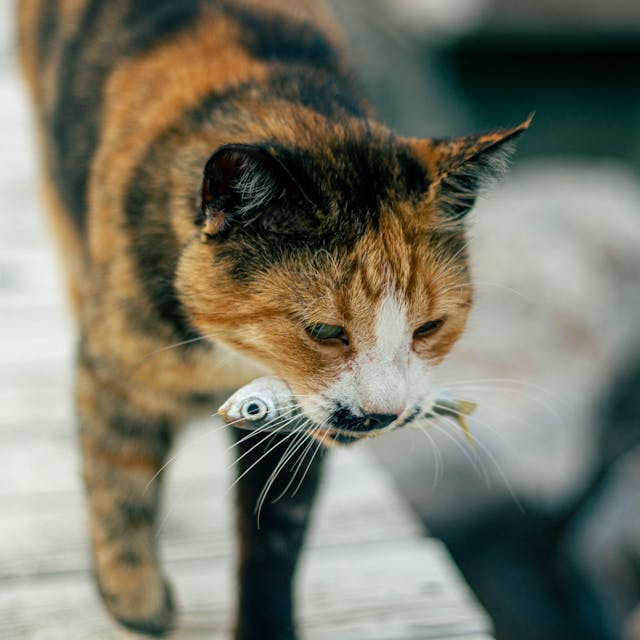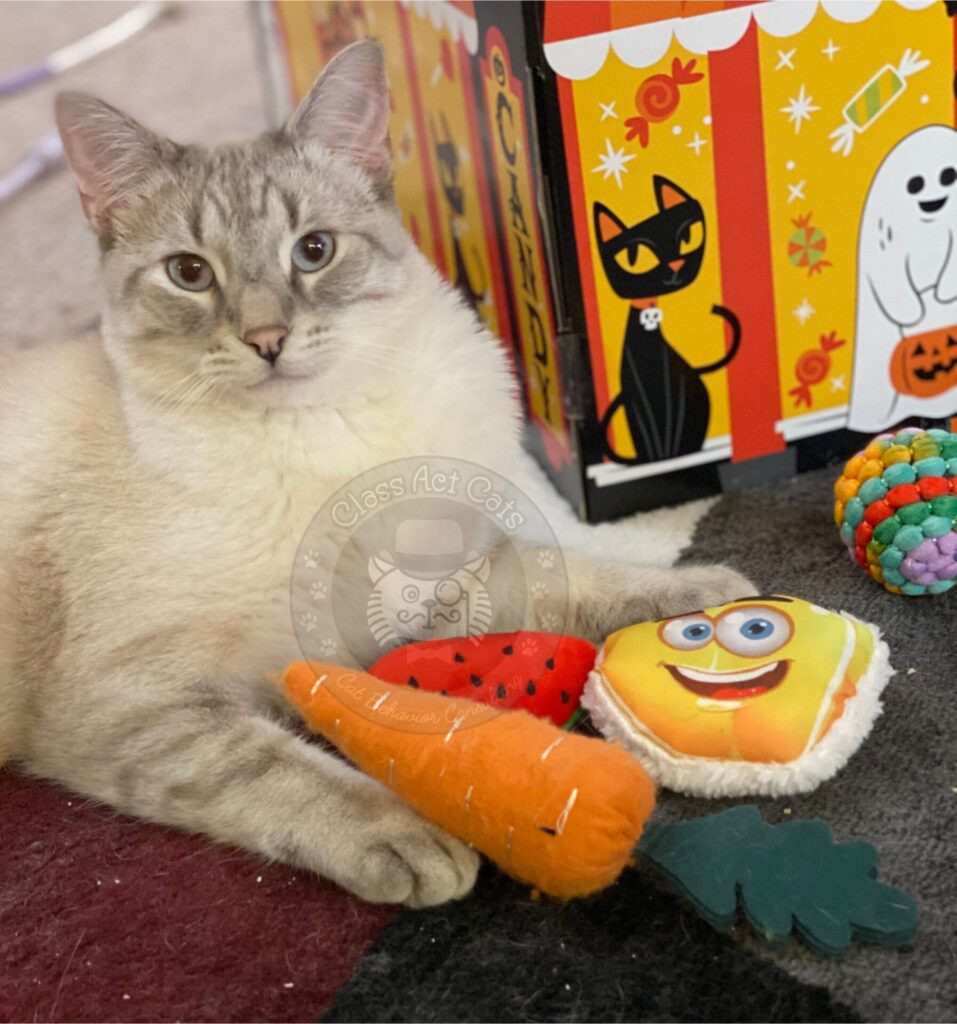“My cat doesn’t like to play.” If you’ve ever said this, you’re likely mistaken. More accurately, your cat probably dislikes how you’re playing or the toys you’re offering. Engaging in playtime with your cat can be trickier than it seems, so don’t feel discouraged if you find it challenging to get your feline friend involved.
While having the right toys is crucial, that’s a topic for another time (you can explore more in “picking the best cat toys”). Today, we’ll dive into the art of Cat And Play, assuming you’ve already selected fantastic toys, perhaps even the renowned Cat Dancer.
Seriously, if the Cat Dancer hasn’t yet graced your cat’s toy collection, it’s a game-changer.
Understanding the Basics of Cat Play Sessions
At its core, cat and play should mimic a hunt, mirroring what your cat would naturally do to catch and enjoy a tasty snack in the wild. While the thought of your cat as a hunter might seem a bit intense, it’s essential to remember their innate predatory instincts when engaging in play.
 A grey kitten lying on a white carpet with some bright pink cat toys.
A grey kitten lying on a white carpet with some bright pink cat toys.
Playful Pounces: Even kittens have a natural hunting drive. Photo by Kim Davies.
Cats are wired to hunt small prey like birds, insects, and mice, requiring several short hunts throughout the day. Therefore, keep your play sessions brief, ideally between 5 to 15 minutes, spread across multiple times daily. While marathon play might seem beneficial, especially for high-energy cats, shorter, more frequent sessions are actually more effective and satisfying for them.
Effective cat and play sessions involve using a toy that you actively move, capturing your cat’s attention much like real prey would. Toys left stationary on the floor are essentially “dead prey” and won’t ignite your cat’s hunting instincts.
Mimic the Hunt Cycle for Engaging Cat and Play
To truly satisfy your cat’s hunting instincts through play, you need to facilitate a complete hunt cycle. This cycle naturally unfolds in distinct stages:
- Finding Prey: The hunt begins with detection.
- Stalking and Plotting: Careful observation and strategic planning are key.
- Chasing the Prey: The exciting pursuit.
- Catching the Prey: The moment of capture.
- “Dispatching” the Prey: The (pretend) kill.
- “Eating” Their Catch: The satisfying conclusion (often represented by treats).
In my experience guiding cat owners, play sessions often get cut short during the stalking and plotting phase. It’s easy to misinterpret a cat’s stillness and focused gaze as disinterest. However, this phase is actually crucial to the hunt. As long as your cat is locked onto the toy, they are actively engaged and enjoying the mental stimulation of the hunt.
Another frequently missed step is the “consuming” phase. Thankfully, this is easily remedied: simply offer your cat a small meal or some delicious treats at the end of each play session. You might also consider incorporating a food puzzle afterward to extend the hunt-like experience and provide additional mental enrichment.
Pro Tips for Engaging Cat and Play
One common mistake owners make in cat and play is dangling a toy directly in front of their cat’s face. While seemingly a way to grab their attention, this doesn’t mimic natural prey behavior, as a mouse wouldn’t willingly run up to a cat. Furthermore, cats have poor close-up vision, making it difficult for them to even see the toy clearly when it’s too close.
Instead, move the toy in ways that simulate real prey. Try moving it from side to side or, even better, away from your cat. This imitates the movement of a fleeing mouse, instantly making the toy more enticing. Guiding the toy around objects, through a play tunnel, or into corners can further pique your cat’s interest, suggesting the “prey” is vulnerable and easier to capture.
Vary Your Play Style for Dynamic Cat and Play
To keep your cat fully engaged and prevent boredom during play sessions, variety is key. Change the speed of the toy’s movement frequently. Start with fast, erratic motions, then slow down to mimic tiring prey. Speed up again, then slow down once more, keeping your cat guessing and on the hunt.
If you’re using a feather toy wand like the Fukumaru feathered wand toy or Da Bird (both highly recommended!), incorporate aerial movements to simulate a bird in flight. However, remember that even birds land eventually. Allow the “bird” toy to touch the ground periodically to maintain realism.
As the play session progresses, consider how real prey would behave. It would become tired, possibly injured, and its movements would become less coordinated. Cats are adept at recognizing these signs of weakness, signaling an opportune moment to strike.
 A cat carries a fish in their mouth
A cat carries a fish in their mouth
Predatory Prowess: Cats are natural hunters. Photo by Baris Yigit.
To tap into this predatory instinct, try moving the toy erratically. Introduce jerky, lurching motions, making the toy appear weakened and vulnerable. This can signal to your cat that the “prey” is faltering, triggering their final, decisive pounce.
Play Under Cover for Surprise Attacks
We’ve discussed moving toys around objects, but another engaging tactic for cat and play is to move the toy under something. If your cat enjoys playfully nipping at your toes under the blankets, this indicates they might appreciate this style of play.
Try using a towel or blanket to move the toy underneath, creating a tempting, rustling target. Products like Sheer Fun For Cats are specifically designed for this type of interactive play. My cat, Poutine, particularly loves pouncing and is a huge fan of Sheer Fun For Cats!
 Poutine the cat with a variety of toys
Poutine the cat with a variety of toys
Toy Tester: Poutine gives a paw of approval to interactive play. – Poutine
Engage All Senses for Immersive Cat and Play
Effective cat and play isn’t just about sight and movement; it’s about stimulating all of your cat’s senses. Engage their sense of smell, hearing, and touch to create a truly enriching and stimulating playtime experience.
Incorporate scents like catnip, silver vine, or valerian root into your play sessions to activate your cat’s olfactory senses. These natural attractants can heighten their interest and excitement.
Sounds can also be incredibly engaging for cats, provided they aren’t easily startled. Look for toys that crinkle, rattle, or have bells. The ever-popular chirping bird toys are a feline favorite for a reason. Alternatively, you can create auditory stimulation by moving the toy over crinkle paper or lightly tapping it against the floor.
Another fun way to engage multiple senses is to introduce a large cardboard box into playtime. Toss in some crinkle paper or newspaper to create enticing sounds and textures. Then, use a wand toy inside the box to generate rustling and movement. Your cat’s natural curiosity should be instantly piqued, prompting them to investigate the source of the intriguing noises and textures within the box. Play tunnels or tents, often made with crinkly material, offer similar sensory enrichment opportunities.
Bonus Tip: After an engaging sensory play session in a box or tunnel, toss in a small handful of kibble or treats to transform it into a homemade food puzzle, extending the fun and rewarding your cat’s hunting efforts.
Keeping Cat and Play Exciting Through Novelty
Does your cat initially adore a new toy, only to lose interest after a few days or weeks? Or perhaps they engage enthusiastically for a few minutes during playtime and then seem bored?
This is perfectly normal and expected cat behavior. To maintain your cat’s engagement in cat and play, introduce variety by rotating toys frequently, both within a single play session and across multiple sessions over time.
For cats who lose interest quickly during a play session, keep a selection of wand toys readily accessible. This allows you to seamlessly swap toys when their attention wanes, or to experiment with different play techniques to reignite their enthusiasm. A wall-mounted wand toy holder is a handy solution for keeping toys organized and within easy reach for quick changes during play.
Even for cats with longer attention spans, toy rotation is still beneficial. After a week or so of using a particular toy, put it away and introduce a new one. After a few weeks in storage, reintroduce the original toy. To your cat, it will be as good as new, sparking renewed interest and excitement.
Play With Your Cat At The Right Time for Optimal Engagement
Just as you might not feel like playing a board game right before bed, timing is important for cat and play. Play with your cat when they are naturally most receptive and energetic. While there’s some flexibility, there are certain times of day that are generally more ideal for feline playtime.
 An outline of a cat against an orange background. There are leaves outlines.
An outline of a cat against an orange background. There are leaves outlines.
Sunrise, Sunset, Playtime: Align play with your cat’s natural rhythms. Photo by Saso Tusar.
Cats are crepuscular, meaning they are most active during dawn and dusk. You can likely predict your cat’s prime playtime by observing these natural activity peaks: sunrise and sunset. Scheduling play sessions first thing in the morning and before bedtime aligns with your cat’s natural energy cycles, making them more receptive and engaged. Similarly, if you notice your cat getting the zoomies around a specific time, capitalize on that burst of energy with a play session.
Another timing strategy revolves around your cat’s feeding schedule. As mentioned earlier, a small meal or treat is a perfect way to conclude a play session, reinforcing the “hunt and catch” cycle. Playing with your cat before they eat allows you to naturally wind down the play session and transition into mealtime. While playing after meals is also possible, pre-meal playtime is generally more satisfying and aligns better with their natural instincts.
A Word Of Caution With Lasers And Electronic Toys in Cat and Play
No guide on cat and play would be complete without addressing laser pointers and electronic toys.
I’m not entirely against them, and electronic toys can be useful, especially for high-energy cats needing more stimulation than you can always provide manually. However, they should be seen as supplements, not replacements, for active, interactive play with you. Electronic toys can be helpful for distracting a cat or providing entertainment when you’re temporarily unavailable for a hands-on play session. Be mindful that some can be noisy and potentially frightening to sensitive cats, and not all are designed with feline play preferences in mind.
Some electronic toys that often appeal to cats include the PetLibro mouse toy, the Hexbug remote control mouse, and the All For Paws Interactive Butterfly Toy.
The Frustration of Laser Pointers in Cat and Play
Notice that none of the recommended electronic toys utilize lasers. Laser pointers can be deeply frustrating for cats. Even if your cat seems to go wild chasing the laser dot, and it appears they are having fun, the fundamental problem is that they can never actually catch the laser. This lack of a satisfying conclusion to the hunt cycle can lead to frustration and even anxiety over time.
If you choose to use a laser pointer, limit its use to very brief periods at the very beginning of a play session and quickly transition your cat to a tangible toy they can actually catch. Ideally, it’s best to avoid lasers altogether. However, if you do use one, always ensure you end the laser session by directing the dot onto a physical toy, then immediately turn off the laser, allowing your cat to “catch” the toy and complete the hunt. Avoid automatic laser toys, as they cannot facilitate this crucial transition to a tangible reward.
Playing With Your Cat Correctly: The Key to a Happy Cat
Engaging in cat and play in a way that truly resonates with your feline companion yields significant benefits. A well-played cat is less prone to boredom, happier overall, and less likely to develop behavioral issues, particularly play-related problems like play aggression. However, not all play is created equal. To maximize the positive impact of cat and play, ensure you’re playing in a way that allows your cat to fully engage in and complete their natural hunt cycle.
To deepen your understanding of effective cat and play techniques, I highly recommend Mikel Delgado’s insightful book, Play With Your Cat. For personalized guidance or assistance with play-related behavioral concerns, I am available for consultations.
Need help with your cat’s behavior?
Set Up a Consultation

